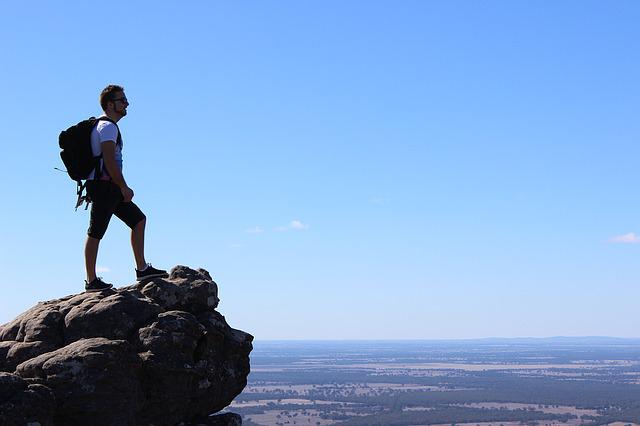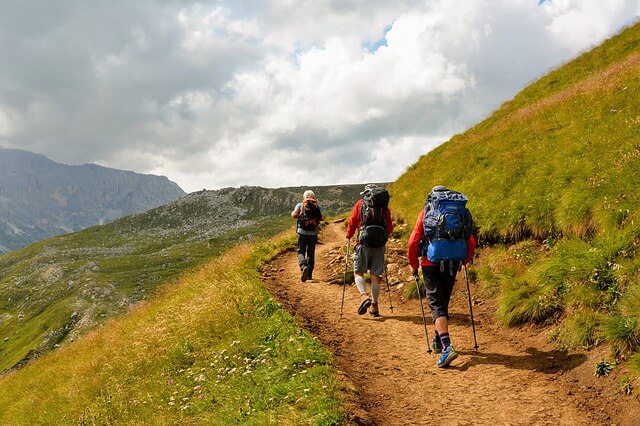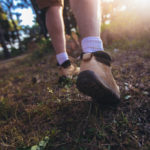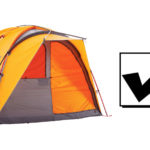Even most adventurers with experience with hiking and trekking can confuse these terms, thinking that they refer to the same type of physical activity. But this is not the case. If you try to google these two terms, you will find that they refer to different types of activities. So, what do they refer to exactly?
You go on hiking trips for fun, whereas the same cannot be said for a trekking trip. The latter is more demanding and longer. But these two differences do not even begin to cover all the things that make hiking and trekking differ. Luckily, this guide will expand on all major differences to help you understand these two terms.
If you want to learn more about hiking or trekking or the differences between the two, you have come to the right place. Stick around for this guide and learn about these two types of trips before you embark on your next journey. I will be with you every step of the way, so I am ready to get started if you are!
More...

Table of Contents
Hiking vs. Trekking: Differences
As you can see in the introduction of this guide, it is clear that there are things that make hiking and trekking different. Knowing these things is essential – you do not want to head on a trek or hike without knowing what you are about to embark on.
To help you learn more about these two activities' differences, I have compiled a list of the five biggest differences. Let’s see what they are:
Difference 1 – The Goal
Each hiking or trekking trip has a particular goal, whether you are aware of it or not. Trekking involves a long, vigorous hike to get to your desired destination. The trip allows you to reach a mountain peak or a specific area on a mountain range. The same cannot be said for hiking trips.
Unlike trekking, hiking involves going on a journey to have fun and get some exercise. That is it! No need to reach a particular destination or fulfill a goal. The goal is to visit some natural environment, soak in the great natural beauty, and return home with an expanded heart and mind.
So, consider going on a hike or a trek if you are thinking about spending time outdoors. If you are in better physical shape, you can go for the trek. Otherwise, go for a long, energetic walk or hike. After all, your body and mind will benefit from anything you do in the great outdoors – whether it is a trek or a hike!
Difference 2 – Hiking Trails
The second difference between hikes and treks is in the trails you visit. Hiking is an outdoor activity that happens on a designated hiking trail. To hike, you need to research and find a trail you can visit.
Do not worry - there are always many hiking trails that you can visit. Some can be less demanding, while others are suitable only for experienced hikers. For example, the Appalachian Trail is a famous one that you might be considering. Still, this trail takes anywhere from 5 to 7 months, so it is not quite suitable for beginners.
If you are a beginner hiker, you can go for a pleasant day hike instead of taking a trail that takes a long time to walk through. You can go on a day hike or a multi-day journey. It is your call, but anything that exceeds three days is considered a trek, not a hike.
Let’s get back to the trails. So, hikes should be done on hiking trails, with or without hiking groups or a hiking guide. The thing that makes trekking different is that it does not need a trail – it can happen anywhere. You can use any kind of challenging environment to trek.
The trek involves walking in a wild natural environment, on dirt or rocky roads, through forests and similar landscapes. The thing about nature and the wilderness is that it can provide you with so many nice sceneries and acquaint you with wild animals and plants that you have never seen before. So, if you have the chance, consider going on a trek for all these reasons!
Difference 3 – Equipment Needed
Another difference between hiking and trekking comes in the equipment needed for each trip. Since the trek is more demanding, it requires more specialized gear. The same cannot be said for hikes, although certain things are obligatory for both types of trips.
Shoes
The most important part of the equipment for these activities is the shoes. You will need to get some good hiking shoes with a waterproof layer, protection for both the arch and the ankle, comfortable sole, and other things to trek. The trekking equipment can be somewhat expensive, but it is worth the investment if you take such trips often.
As for hiking, you do not always need specialized hiking shoes, although they can come in handy. If it is a day trip that is less demanding, you can wear your regular shoes. Make sure that they are worn in and comfortable. Otherwise, the long hours spend hiking will leave your feet hurting and with many blisters.
Clothing
Aside from the shoes, there are other things you will need for a trek. Quality clothes that are waterproof and do not adopt smells are a must. Then, you will need walking poles that you can use on hiking trips. These offer great support and can distribute the pressure between your lower and upper body, so I recommend getting a pair.
Depending on the weather conditions, you might also need a waterproof jacket or raincoat. It is smart to take a change of clothes and extra pairs of socks too. It sounds funny to say that you will need hiking underwear, but they are very comfy, and you can benefit from having a pair.
Shelter
You will need some shelter for any overnight hikes or trekking trip that lasts several days. You can try hammock camping or take regular camping gear. The latter would include a tent, a sleeping pad, a sleeping bag, and a quilt if the weather is colder.
Depending on where you are traveling to, you should check if there is a base camp or campsite that you can visit. Check the requirements – some camps offer you shelter, so you might not need to take one with you. Still, it is smart to invest in a shelter of your own. One that has good insulation and waterproofing can always come in handy.
Accessories
There are quite a lot of accessories that you need for a hiking or trekking trip. Some must-haves are a first aid kit, sunscreen, a hat, sunglasses, a compass or map, a knife, a flashlight, or a headlamp. You must have space in your backpack for these things if you want to avoid having any problems on your trip.
The more demanding your trip is, the more equipment you will need. So, make sure that you pack everything needed. Otherwise, you might have to leave the trail to return home and repack.
Food and water
Water is a must for any trip, even the day trips. You will need food that will energize you throughout the day or the entire trip. So, I recommend taking food rich in fats, sugar, and carbohydrates. Also, if you are planning a journey that will last multiple days, take containers and cookware that you can use to cook and eat your food from.
Difference 4 – Duration of Trip
Yet another difference between hiking and trekking comes in the duration of the trip. I have mentioned a few things about the duration of the trips, but let me elaborate. You need to know that a hike lasts one or two days, whereas a trek can last from two days to several months.
Hiking trips are more convenient for people who want to briefly reconnect with nature. This is because they last a lot shorter than trekking trips. In this modern world, one has to expect that people are not always able to dedicate a few months to do a trek – they are more likely to go with a short hike.
It makes no difference whether you go with a hike or a trek. It is always a good idea to dedicate some time to yourself, visit a natural environment, and visit the mountains. You can get many benefits from these trips, some of which I will mention further below. So, make sure to stay tuned for that as well.
Difference 5 – Overall Distance
The final but no less important difference between trekking and hiking is the distance that each trip involves. For example, a hike is like a long walk. You can expect to pass anywhere from 4 to 20 kilometers for that walk. If it is a multi-day hike, you can expect to walk 50 kilometers or so.
That might seem like a lot, but it is not – I promise! You will enjoy the entire trip so much that you will not feel like you have walked that much. With that being said, trekking takes the distance to a whole other level. On a trek, you can walk a total of 25,000 kilometers.
But as I mentioned, some treks take up to 7 months. When you are running through 20 kilometers per day, you will get used to walking long distances. You will not have a problem reaching the goal of 25,000 kilometers. It does take a lot to be prepared to hike or walk as much, but with a bit of dedication, I am sure you will be able to do it!

Hiking vs. Trekking: Similarities
As there are differences, there are also some similarities between hiking and trekking. After reading the differences, you might be thinking that nothing can make these activities similar – but that is not true! Here are the two significant similarities that connect hiking and trekking:
Similarity 1 – Good for Your Physical Well-Being
You get so much exercise when hiking or trekking that your entire body reaps the benefits later. The obvious benefit from the activities is that you will lose weight. The more you hike or trek, the more pounds you will shed off!
But there are other things that you might not be aware of. For example, these activities can lower the risk of heart disease or a heart attack. Aside from bettering heart health, they can also lower blood pressure. Hiking and trekking are great for your entire immune system!
Finally, all your muscles will get stronger and better. You will see them changing and evolving - from the hip muscles to the upper body and the lower leg muscles.
Similarity 2 – Good for Mental Clarity
Besides the body, the mind will also get many advantages from hiking and trekking. Being in nature and breathing in all that fresh air will all be like a godsend. It will give you mental clarity, more creativity, and more happiness. If you are dealing with depression or anxiety, consider spending more time in nature. You will not be able to deny the benefits!
Is Trekking More Difficult Than Hiking?
Yes, treks tend to be more difficult than hikes. Hiking includes fewer miles, fewer days, and less walking on uneven or rugged terrain. The hiker does not need to carry a heavy load with shelters, extra clothes, more food, and water. Having these things on your back during a trek is no joke.
For a trek, you will need to be mentally and physically prepared. You will have to consider everything I mentioned above and go on a trek only if you feel you can do it!
Again, hiking and trekking are so much fun and can give you an experience of a lifetime. So, do not hesitate to try both and see which one you like better. Either way, you are in for a real treat!
- Are Merrell Shoes Good? – An Unbiased Review of Merrell Footwear - December 9, 2023
- Where Are Merrell Shoes Made? - December 9, 2023
- Camping in 40-degree Weather: Tips and Tricks - September 25, 2023




![What is the Difference Between a Parka and a Jacket? [3 Differences Explained] What is the Difference Between a Parka and a Jacket? [3 Differences Explained]](https://grandcircletrails.com/wp-content/uploads/2021/11/Clothing-for-the-camping-trip-1-150x150.jpg)
![Difference Between Merino Wool and Regular Wool [+Similarities] Difference Between Merino Wool and Regular Wool [+Similarities]](https://grandcircletrails.com/wp-content/uploads/2022/08/Difference-Between-Merino-Wool-and-Regular-Wool-150x150.jpg)
